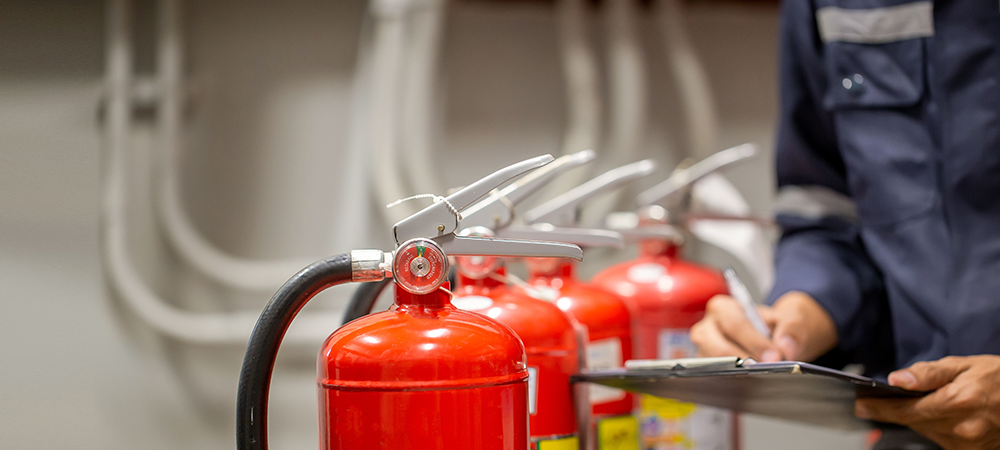In this piece, Ibrahim Imam, Co-founder, Group-Co-CEO and CEO of MENA & APAC at PlanRadar, discusses the digital solutions available to enhance fire safety processes and how businesses can harness the technology for risk mitigation.

The construction industry plays a vital role in modern development, shaping skylines and supporting communities worldwide. Ensuring construction site safety, particularly fire safety, is of the utmost importance. However, maintaining fire safety compliance in this multifaceted sector has proven to be a significant challenge. The emergence of digitisation presents an opportunity to revolutionise fire safety measures, enhancing efficiency and compliance.
Building digitisation has become a cornerstone of the construction industry, enabling informed decision-making, boosting productivity, reducing costs and waste, and improving maintenance and safety. The sector has witnessed a significant surge in technology adoption, with an estimated investment of £50 billion in digital solutions between 2020 and 2022 to streamline construction operations.
The role of digital fire safety software
Digitising fire safety in construction necessitates the utilisation of digital fire safety software. This specialised software encompasses fire safety compliance features such as checklists, inspection templates and document management systems. It empowers construction companies to develop comprehensive fire safety plans, conduct inspections and effortlessly implement safety measures.
The software offers real-time monitoring and alerts to enable teams to vigilantly observe safety parameters and promptly respond to any abnormalities. For instance, temperature sensors can detect sudden spikes and promptly notify the relevant personnel for immediate action.
Furthermore, digital fire safety software streamlines documentation and record-keeping processes. Critical documents like certifications, permits and maintenance records can be stored digitally, enhancing efficiency and accessibility for audits and inspections.
Leveraging technologies for risk mitigation
In addition to digital fire safety software, construction companies can leverage other technologies to further enhance fire safety compliance. Building Information Modelling (BIM) is a powerful tool for creating digital 3D models of construction projects. By including fire safety parameters in these models, potential hazards can be identified and addressed during planning and design. This proactive approach integrates fire safety measures from the start.
Integrating IoT devices enhances fire safety in construction. Smoke detectors, heat sensors and fire extinguisher monitors can be connected to a central system for real-time data. This allows teams to monitor equipment status, detect malfunctions and take immediate action.
Additionally, using 3D and 360° visualisation technology can enhance fire safety compliance. Virtual walkthroughs of construction sites enable stakeholders to identify fire safety risks and suggest preventive measures before construction starts. This immersive technology improves understanding of fire safety requirements and helps with decision-making on fire safety protocols.
Digital solutions for fire risk assessment
Digitisation also provides effective solutions for efficient fire risk assessment procedures in the construction industry. Traditionally, fire risk assessments have been carried out using paper-based methods, which can be time-consuming and susceptible to human error. By digitising this process, construction companies can eliminate the need for paperwork, reduce administrative workloads, and improve efficiency and accuracy in assessments.
Digital fire risk assessment tools enable the creation of customisable assessment templates for construction projects. These templates guide assessors, ensuring comprehensive coverage of fire safety aspects. This streamlines the assessment process, helping construction teams prioritise fire safety improvements.
Collaboration and new technology
Collaboration is crucial for effective fire safety in construction projects. Digitisation provides tools and platforms for seamless collaboration among teams, contractors and experts. Communication channels like cloud-based project management, instant messaging and video conferencing enable real-time sharing, discussions and decision-making.
By leveraging digital tools, project teams ensure stakeholders are involved in fire safety. It promotes accountability, transparency and understanding of roles in maintaining standards. Collaboration fosters knowledge sharing and continuous improvement in fire safety compliance.
The golden thread principle and digital information
The golden thread principle, introduced in fire safety regulations, underscores the paramount importance of comprehensive and accurate fire safety information throughout a building’s life cycle. Digitisation plays a pivotal role in achieving this objective by providing a robust platform for capturing and managing digital fire safety information. This encompasses design, construction, maintenance records and training documentation.
Digital information can be effortlessly stored, updated, and accessed, ensuring its availability when needed. It facilitates efficient tracking and monitoring of fire safety measures throughout the building’s life cycle. Furthermore, it streamlines information sharing with regulatory authorities, fire departments, and stakeholders during inspections and audits, fostering transparency and compliance.
Challenges and considerations
Digitising fire safety in construction offers numerous benefits, but it also presents challenges. One significant challenge is the upfront investment required for digital tools and technologies. Construction companies must allocate resources for software, employee training and system integration. However, this investment is crucial for long-term fire safety compliance and risk mitigation.
Data security and privacy are also paramount considerations. Construction companies must safeguard digitally stored data, including fire safety plans and inspection reports, from unauthorised access or breaches. Robust cybersecurity measures, such as encryption and access controls, should be implemented.
Moreover, the adoption of digital tools necessitates proper training and change management within construction organisations. Employees need training on using digital fire safety software and comprehending the importance of adhering to digital protocols. Change management strategies can address resistance to innovative technologies and ensure seamless integration into daily operations.
Digitising the construction industry is a major transformation. Not only does digitisation in the construction sector offer greater efficiency, but it also ensures a higher level of safety. Digital transformation offers benefits that far outweigh any initial resistance or challenges faced during implementation. Efficiency, productivity and improved compliance are just the tip of the iceberg!




